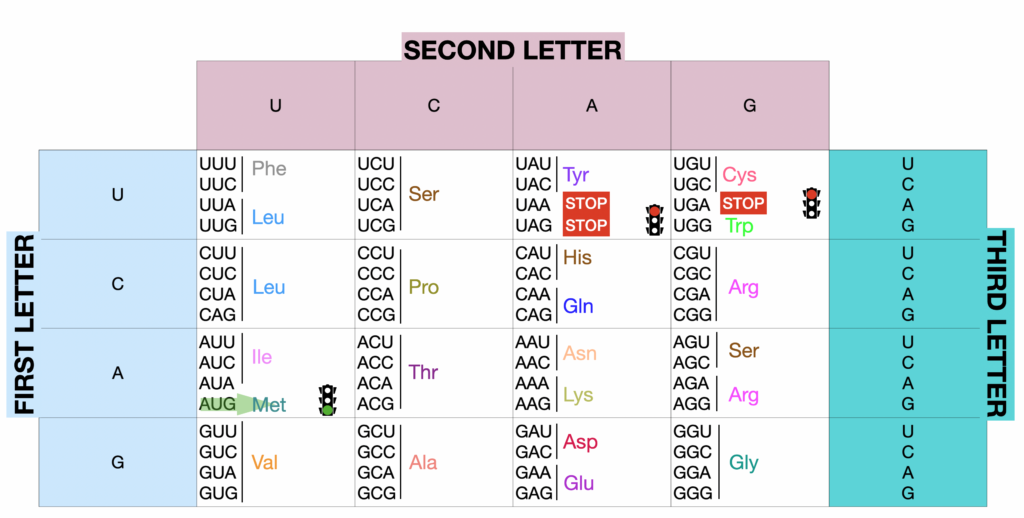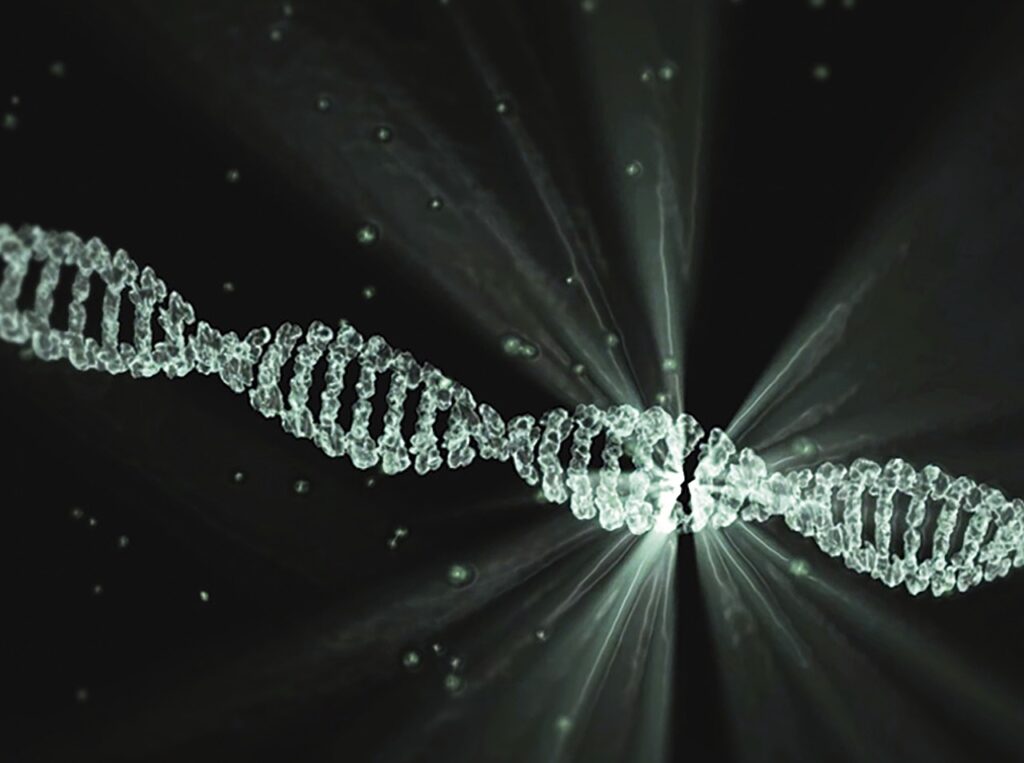Lab understanding: Let’s study mutations !
Mise à jour le 28/12/2025 By Jboscq
Every organism contains DNA in which all the particularities of its being are inscribed, both in the definition of its structure and its functioning. Basically, this makes each of us an original individual. Even in the case of twins, because as life progresses, different mutations appear that may interfere with our structure or functioning. This means that each mutation will be important, and may even lead to the emergence of a new being, or even, more extraordinarily, a new species!
1- The Potential Power of a Small Change
Recap the video in answering the different questions :
1. Mutations can be harmful, helpful (unlikely), or neutral in their effect. Often a neutral mutation will not change the amino acid that it codes for. Using your mRNA chart, give another mRNA codon that this CUU could mutate to and still code for Leucine.
The mRNA codon CUU could mutate to C________ and still code for Leucine, which could be a neutral mutation.
2. It is important to understand that in mutations, a specific part of a nucleic acid experiences the mutation. In the below cartoon, fill in the blank that describes the part of the DNA molecule that is experiencing the mutation. Then label where that part is found on the DNA in the picture below.

3. Even a gene mutation that is a point mutation, meaning it affects one nucleotide base, can still make a major change. Sickle Cell Anemia is caused by a point mutation knows as a substitution. Complete the following example of a substitution:
If the following is for normal hemoglobin:

Show what would occur if the first T (“thymine”) DNA base in the portion shown above mutated to an A (“adenine”).
Sickle Cell Hemoglobin:
Portion of mutated hemoglobin DNA :
mRNA :
Amino Acids :
4. An insertion or deletion can result in a frameshift mutation.
To demonstrate this, complete the following:
Normal Strand:
DNA: GCA ATG CAC
mRNA:
Amino Acids:
Deletion (causing a frameshift):
Taking out the first “G” in the original DNA above results in: DNA: CAA TGC AC
mRNA:
Amino Acids:
How did the frameshift change the amino acids that were coded?

2- What do you remember about mutations?
For the following, place an “T” if it is a true statement or «F» if it’s false. But if it’s false don’t forget to say why.
—– Mutations are random.
—– Mutations are mostly beneficial and useful for an organism.
—– Mutations can occur in both DNA and RNA.
—– Mutations can only occur during interphase.
—– Not all DNA codes for proteins.
—– Not all genes are “turned on” or activated.
—– Substitution mutations typically result in frameshift.
—– Mutations can be genetically inherited.
3- just a little exercise
Use the following DNA sequence to answer the questions.
Original DNA Strand : T A C A C C T T G G C G A C G A C T
Mutated DNA Strand : T A C G A C C T T G G C G A C G A C T
a. What is the mRNA sequence of the original DNA strand?
b. What is the amino acid sequence of the original DNA strand? (Use the chart on the following page)
c. What is the mRNA sequence of the mutated strand?
d. Circle where the mutation occurs in the mutated strand.
e. What type of mutation is this? (Circle one)
Missense Nonsense Frameshift Duplication Expanding
f. What is the amino acid sequence of the mutated strand?
g. How many amino acids are different?
4- Illustrate each chromosome’s mutation
Sketch your own cartoon for the following chromosome mutations. Creativity is encouraged!
| Duplication | Deletion |
| Inversion | Translocation |
To go further: Mutations and evolution

